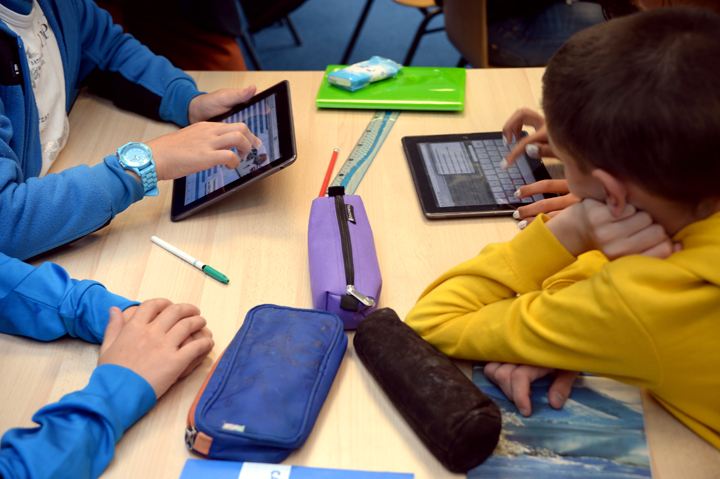TORONTO – Parents have been putting restrictions on the amount of time their kids can spend in front of screens for years – but nowadays parents have to worry about a myriad of devices, not just the TV.

From iPods, tablets and computers, to video games and digital toys, the task of limiting screen time is becoming a difficult one for parents.
According to Dr. Shimi Kang, a Vancouver-based psychiatrist and parenting author, it’s recommended that kids under the age of 18 should only have two hours of screen time outside of educational purposes.
Zero screen time is recommended for children under the age of two.
And while today’s kids have many advantages with the amount of technology at their finger tips, too much screen time can have an adverse affect on their health.
Obesity, poor eating habits, sleep loss, social isolation and behavioral problems can all stem from overuse, according to Kang.
READ MORE: Can children become addicted to technology?
Cases of Internet and video game addiction in children are on the rise, too. The psychiatrist said she sees hundreds of kids in her practice that exhibit technology addiction symptoms.
“The accessibility of devices is at an unprecedented level – and it’s caught parents off guard,” Kang told Global News. “And in all honesty, we are losing this battle, if you want to call it that.”
But as the rise of mobile devices continues, a trend in parental control apps that allow parents to have better control over their kid’s devices has emerged. These apps allow parents to not only set content limits, but limit the amount of time their child spends on certain apps altogether.
Here are some of the top parental control apps:
TimeAway (Android)
TimeAway, released this week for Android devices, allows parents to remotely control up to six Android devices for free.
Parents can monitor app usage and downloads, pause apps remotely, set schedules for school and bedtime and create time limits for apps. Once the child user has reached the determined time limit the device locks with a passcode set by the parent.
DinnerTime, available for both Android and iOS users, offers many of the same features as TimeAway.
Parents are able to pause activities remotely for up to two hours for family time, as well as set a clock for bedtime. This app also allows parents to pause activities for up to 24 hours – which may come in handy in the event a child is grounded.
While this app only allows up to two devices to be connected, the DinnerTime Plus app allows users to expand to five devices with an in-app purchase of $1.99.
Screen Time: Parental Control (Android)
Screen Time: Parental Control offers the same time-limiting features, but allows parents to add bonus time as a reward for good grades, or helping around the house.
This app also offers the ability to monitor what websites the child is visiting and what apps they are accessing. Parents can block any apps they don’t want the child using.
While the app is free, parents have to pay for a monthly plan to use the service.
ParentKit (iOS)
ParentKit also allows parents to set up schedules for their kids usage and monitor app and web browser activity. When the “screen off” schedule comes into affect, selected apps are hidden from view on the child’s device.
While the app is free, parents have to pay for a monthly plan to use the service.
Tips for parents
If you don’t feel comfortable monitoring your kid’s screen time through what some may consider invasive apps, there are still many things you can do at home to promote a health relationship with technology.
Kang recommends that parents help kids to understand why there are limits on tech use, while allowing them to pick what they do online during their allotted time.
“Reinforce that it’s important that they get outside and play with their friends, but ask them what games they would like to play during those two hours of screen time,” she said.
READ MORE: New Canadian website helps parents pick right apps
It’s also important that parents be role models when it comes to tech use. Kang said its imperative for parents to show their kids good habits – which means never checking your phone during dinner, or texting while driving.
“Realize that you are in control – kids don’t have access to technology without parents, especially little children,” said Kang.






Comments